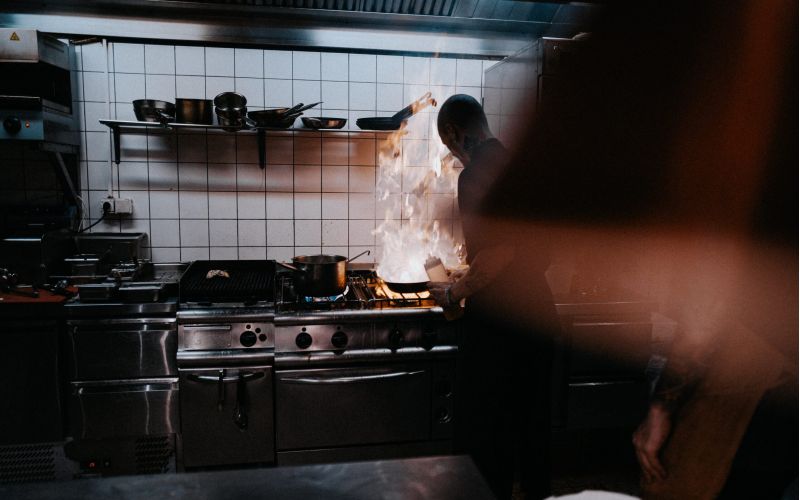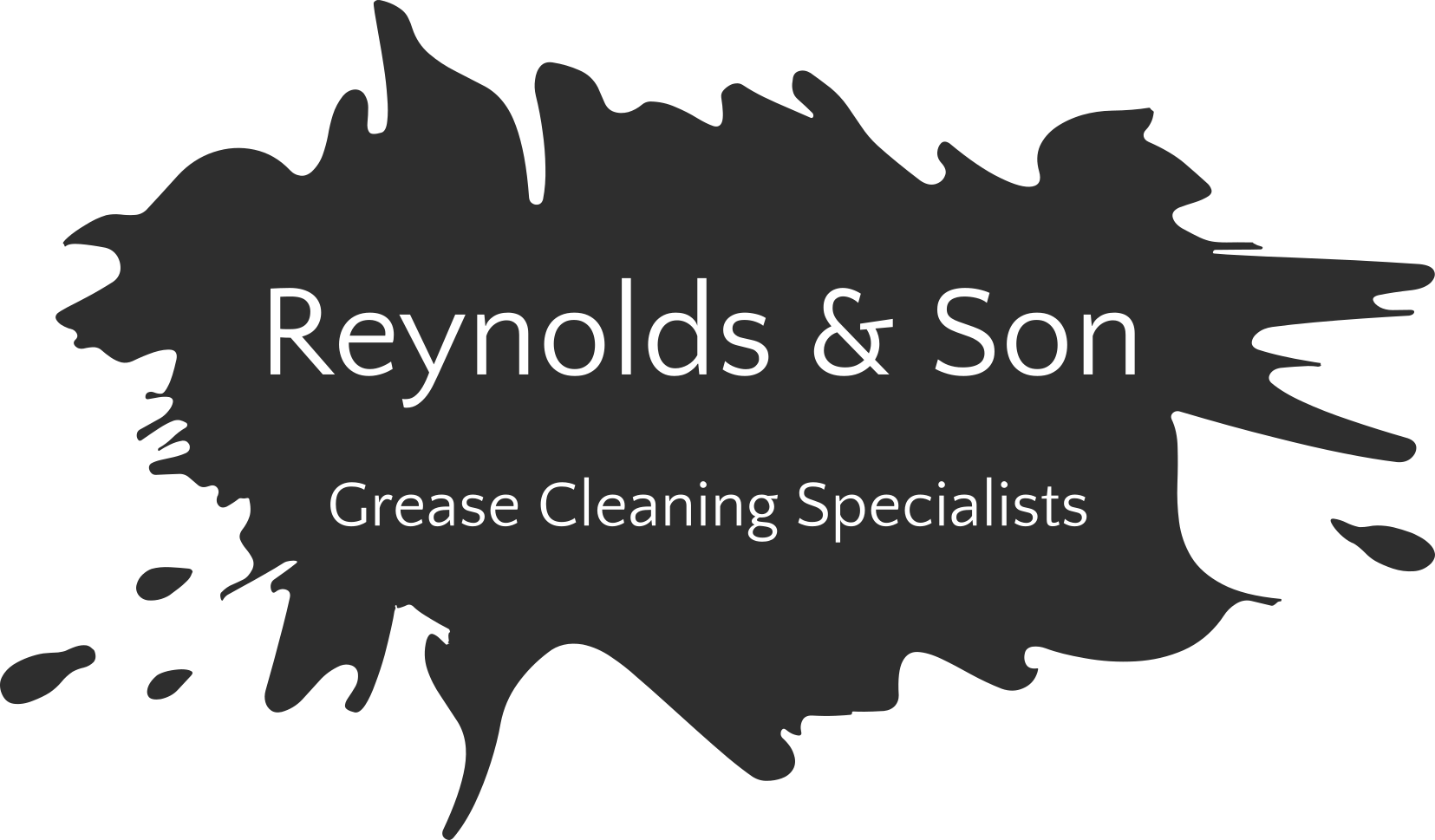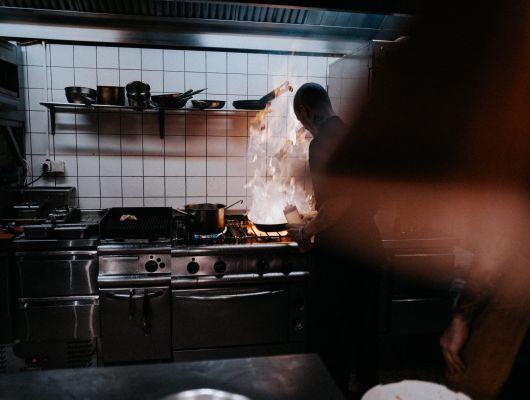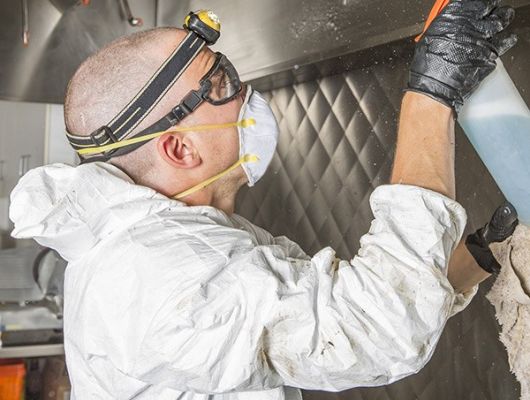Grease Trap Cleaning
Cleaning the grease trap can be a dirty job, and it must be done correctly. It is advisable to use a company that specialises in this type of work and have the relevant certificates.
Call Reynolds & Son today on 01604 454263 for grease trap emptying in Northampton
Larger grease traps are usually positioned externally from the premises. Whether they are placed above or below the ground, the grease trap a trained specialist with the correct pumping equipment to complete the job correctly. If preferred, smaller grease traps can be cleaned in-house; however, you must ensure that it is cleaned thoroughly and correctly to avoid any blockages.
British Water has recommended that your grease trap is cleaned once it is 25% full of solids. If you operate a large commercial kitchen, it may be required to have your grease trap cleaned more frequently.
How to Clean Out a Grease Trap:
The odour from a grease trap is offputting and very overpowering to customers and staff alike. For this reason it is important to empty the grease trap on a regular basis.
If you want your team to clean the grease trap, you need to be aware that they may not clean it wholly or thoroughly; this will impair the performance of the grease trap, which will then lead to blocked drains.
Not only will any blockages create a problem with foul smells and hygiene, over some time they will become toxic.
Leftover food particles that have become deposited in a grease trap will begin to rot; they will then release poisonous gases like sulphates.
These gases, when combined with water, can attack and react with concrete and mild steel. Whether your grease trap is automatic or passive, they both need to be cleaned with different methods and frequency.
If this happens, it means that your grease traps could become ineffective, damaged and will possibly need replacing. You can avoid this upheaval and costly repairs by regularly cleaning your grease traps.
Cleaning the grease trap can be a dirty job, and it must be done correctly. It is advisable to use a company that specialises in this type of work and have the relevant certificates.
Larger grease traps are usually positioned externally from the premises. Whether they are placed above or below the ground, the grease trap a trained specialist with the correct pumping equipment to complete the job correctly. If preferred, smaller grease traps can be cleaned in-house; however, you must ensure that it is cleaned thoroughly and correctly to avoid any blockages.
Whether cleaning grease traps yourself or using a specialist company, it is a legal requirement that a licensed waste contractor must always carry out disposal.
British Water has recommended that your grease trap is cleaned once it is 25% full of solids. If you operate a large commercial kitchen, it may be required to have your grease trap cleaned more frequently.
How Often Should a Grease Trap be Cleaned?
We recommend that as standard practice grease traps should be emptied and cleaned at least once every three months. However, this will depend on your grease traps capacity and how many meals are cooked and prepared daily in your commercial kitchen.
We recommend that your grease trap is cleaned if the grease and solids are more than 25% of the depth of the wastewater. It is at this point that the cleaning of the grease trap is both unchallenging and economical. Once the trap is filled with surplus oil, fat and grease, essential functions and processes in the kitchen may be slowed down.
Guide to DIY Grease Trap Cleaning Systems:
A Basic Guide to DIY Grease Trap Cleaning
- Make sure that any water cools before cleaning.
- Always wear the appropriate clothing; this includes respiratory protection, gloves, mask, goggles and overalls.
- Make sure you have protected the kitchen floor so you can limit any potential contamination.
- When opening the tank, you need to pry off the lid carefully, so you don’t cause any damage to the seals or gaskets.
- Use a ruler or gauge to measure the quantity of fat, oil and grease (FOG). Make a note of the measurements; these will be required when you complete your paperwork.
- Sludge floating on top should be removed.
- To remove any water from the tank, use a scoop or small bucket.
- Using a separate scoop scrape out the solid FOG’s.
- You can use a specialist vacuum to help remove smaller debris. Always check the outlet and the inlet pipes for any residual waste.
- To clean the base, lid and walls, you should use water that is at room temperature.
- Make sure the holes in the baffles are unobstructed and clear.
- When you run clear water through the grease trap, if it doesn’t flow properly, it could be there is a blockage further in the pipe, at this stage you will need a plumber to rectify the problem.
- FOG’s have bacteria, so it’s crucial to seal any FOG in a secure container that is leak-proof, make sure that a licensed waste contractor removes the FOG.
- After inspecting the lid gasket and all the other components, replace any elements if required.
- Once all the components have been reinstated in the grease trap, make sure you replace the lid securely.
- All mandatory forms and paperwork should be completed and stored safely, so they are ready for any inspections.

Address:
53 Sherwood Avenue
Northampton
Northamptonshire
NN2 8TA
Phone: 01604 454263
Mobile: 07837 104 269
5 Signs Your Restaurant or Commercial Kitchens Grease Trap Needs Cleaning:
-
Once all the dirt, fat and grease buildup, it is difficult for water to flow properly through the drain, this leads to slower waste movement. With all that grease and dirt buildup, it becomes hard for water to flow through the drain, leading to slow waste movement. When the drainage in your kitchen is slow-moving or is clogged:
-
A poorly maintained grease trap is likely to be the leading cause. As oil fat and grease begins to accumulate in your grease trap, they begin to solidify. Over time this will lead to the trap becoming full of dense grease and fat. Usually, if you look into the grease trap, you can see into it; however, when the grease trap gets full, the excess grease and fat begin to stiffen at the top and start to form a cap.
-
Unexplainable odours also indicate that the grease trap requires cleaning. These are the type of smells that won’t disappear, even after you take out the rubbish and have cleaned the kitchen.
-
If you haven’t had your grease trap cleaned for some time because you haven’t noticed it needs to be cleaned or have just forgotten, it is a good idea to have a diary for reminders. We recommend that a grease trap is cleaned every 90 days or earlier if you have a busy kitchen.
-
If you start to find grease in some unusual places in your kitchen, if your grease trap has clogged the grease will try to escape through other exits, including sewer pipes, water lines and sinks etc. If this happens, you will accumulate oil and fat in the wrong places.
Grease Trap Emptying
Northampton:
Reynolds and Son have many years of experience of grease trap emptying, we have all the specialist equipment at hand and are fully qualified.
If you require any information regarding grease trap emptying and cleaning in Northampton or the surrounding areas, please contact us on phone 01604 454263.
Get a free quote today
for
our grease cleaning services.
If you are looking for grease removal services in Northampton, you can speak to R & S Grease Removal for expert advice. We can clean all the grease in your system as well as provide effective extraction system cleaning for any commercial kitchen. We know that the commercial kitchen producers a certain amount of grease on a daily basis and this can easily build up within the extraction system. This grease can easily cause your system to malfunction or to stop performing as it should. It can even be a hazard and start a fire.



